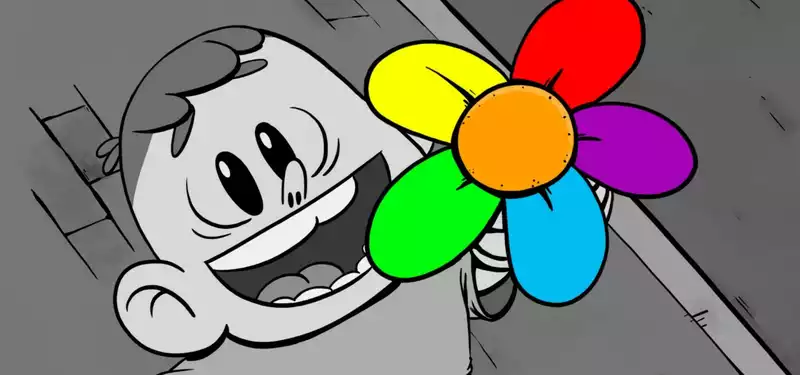Dec 8, 2023
2024 Academy Award Nominee for Best Short Film: "It-s A Gray, Gray World," directed by Seyed Mohsen Pourmohseni Shakib
Welcome to Cartoon Brew's spotlight series highlighting animated short films that have qualified for the 2024 Academy Awards. There are several ways for a film to qualify for an award. In this edition, we will focus on films that have won an Oscar-eligible award at a festival that is eligible for the Academy Awards.
Today's film is "It's a Gray, Gray World" by Iranian filmmaker Seyed Mohsen Pourmohseni Shakib. The short won Best Animated Short Film at the Cleveland International Film Festival and qualified for an Academy Award.
Set in a world where color is banned, the short features a young man whose vivid identity is accidentally revealed by a playful young child. People nearby panic and call the police to have the young man arrested, but he manages to escape and returns, ready to fight for his freedom.
Seyed Mohsen Pourmohseni Shakib: The inspiration for this piece comes from my personal experience. I live in Iran, which is a patriarchal society that cannot tolerate anything that threatens its toxic masculine status quo. As I recall, I failed to meet the hetero norms of Iranian culture and for most of my life I was punished to the max for it. [For example, I was the main target of bullying and teasing by my peers in high school. So I was always an outcast and no one wanted me on their team. Because of these painful memories, I became committed as an artist to helping marginalized communities find their voice and make the world a better place.
What about this story or concept resonated with you and inspired you to direct this film? In short, this story was a cathartic point for me. It was the gate that connected me to my repressed emotions after resisting depression for so long, and helped me face the anger that was burning inside me.
Moreover, for me, it was an emotional journey from reality to the world of the imagination, where I could see the things I wanted so badly to have in real life but could not, such as having the courage to express myself as I am, or the horizon with a bright future not only for myself but also for society. I could become a hopeful person who gazes at the horizon where there is a bright future not only for myself but also for the society.
What did you learn about the production aspect, the filmmaking aspect, the creative aspect, or the subject matter through the experience of making this film? Furthermore, making this film helped me understand the limitless power of fantasy animation as a weapon to achieve a freedom that no dictatorship can take away, as long as I am breathing and thinking.
During the process of making this film, my team and I found ourselves in a long-term relationship, like a couple struggling to raise a child. Many times we have been mad at each other and laughed at each other, but we have never forgotten that we have a greater responsibility than we have.
I wanted to reflect the sociopolitical and psychological layers of living under a totalitarian regime. To this end, Pezman Malemir, who designed and animated the film, made a list of all the emotional characteristics he wanted to feel through the environments and characters and tried to find the right style to bring them to life. [For example, he used the middle-class architecture of Tehran as the main reference for the background. It was also important that the film be easy to watch in order to balance and restrain the bitterness of the story in a positive way. Therefore, Pejman simplified all the complex visual expressions and made the film in a child-friendly style. This allowed the film to reach a wider audience.
.



Post your comment